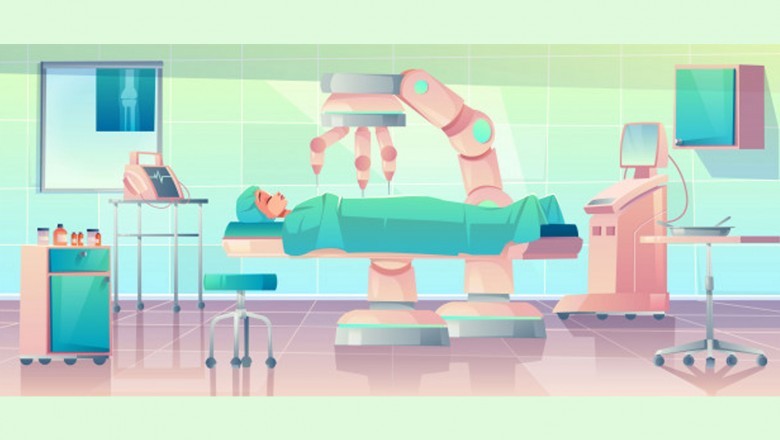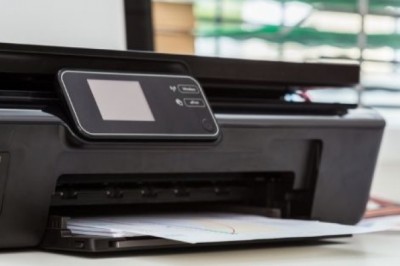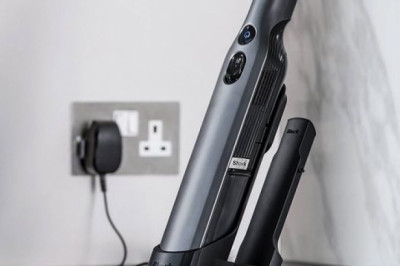views

The newly AI-fuelled world of work is not about introducing robot versions of frontline employees, it’s about optimizing and automating repetitive labour intensive activities.
We all are surviving through an unprecedented crisis. During the COVID-19 pandemic, healthcare workers have emerged as frontline heroes, from working overtime to protect our communities from the spread of novel Coronavirus. But at the end of the day, they are also human – they are not immune to the apprehensive and uncertain atmosphere the pandemic has fostered. We should be protecting the first responders and medical staff – who has put their wellbeing on the line to support their communities during the crisis.
The current situation demands a creative solution. The US has become one of the centres of the global pandemic. Even though the government has given stay at home orders or the regional shut downs were implied – still we are not able to flatten the curve. According to reporting from NPR, the situation is still problematic. “Nearly a month into the declared pandemic, some healthcare workers say they are exhausted and burning out from the stress of treating a stream of critically ill patients in an increasingly overstretched health care system.”
Hospitals are doing all they can to keep their caregivers safe and protected but their resources are stretched far too thin. Like according to the reports, some hospitals in high-infection areas like New York City can only afford to give healthcare workers one N95 mask every 5 days.
“It can be disheartening to have that feeling of uncertainty that you are not going to be protected.” Sophia Rago, an ER nurse based in St. Louis.
As we know, our frontline workers need the shield of safety as much as possible. The basic solution would be to increase stores of personal protective equipment (PPE) and N95 masks. But what all can we do – like how to lessen the risk of patient to provider transmission?
BY INVESTING IN AI-POWERED SOLUTIONS THAT CAN AUTOMATE SOME HEALTHCARE PROTOCOLS AND LIMIT THE NEED FOR CLOSE CONTACT.
According to the researchers at Harvard Business Review, “Traditional processes are those that rely on people to function in the critical path of signal processing and are constrained by the rate at which we can train, organise and deploy human labour. Moreover, traditional processes deliver decreasing returns as they scale.”
Digital Facilities can be scaled up without such constraints, at virtually infinite rates. The only theoretical bottlenecks are computing power and storage capacity – and as we know, we have plenty of both.
When it comes to AI in the workplace, we read through the headlines like “Will robots take our jobs” and it makes it easy to get distracted by the fear-factor narrative. Yes, the AI will change the employment landscape, it will impact the jobs of workers whose roles require them to perform physical activities or operate machinery in a predictable environment. And in the industries like manufacturing, food services and retail – bots are already involved. So for the frontline workers – they have the highest potential for large portions of their jobs to be automated. According to McKinsey, “59% of manufacturing activities and 47% of a retail salesperson’s activities are performed by bots”. So the AI-powered bots will take care of the specific tasks. It won’t eliminate the entire job.
The AI-powered – digitally facilitated solutions generally fall into two categories: Disease Containment & Patient Management. Let’s learn about them.
- Disease Containment:
Let’s assess AI’s ability to limit disease transmission. When we talk about limiting disease spread, the aim is it to use AI tools to allocate human resources better while still protecting patients and staff.
Like for instance, the screening system – recently deployed at Tampa General Hospital in Florida. The AI framework was designed by the autonomous care start-up Care.ai and intended to facilitate early identification and interception of infected people before they come into contact with others. According to a report from Wall Street Journal, the Care.ai tool taps into entryway cameras and conducts a facial thermal scan. If the system is reported with feverish symptoms like sweat or discoloration – it will notify the healthcare staff and immediate actions would be taken for the same.
Also, the tech companies like Microsoft also came up with something similar thought process – remote diagnostic and alert tools in facilities across the counties. Experts from Microsoft had shared that “AI-powered technology not only improves the efficiency of epidemic prevention but also reduces the work burden of frontline personnel, so that limited human resources can be used more effectively.”
- Patient Management:
Let’s assess the AI’s applications for diagnostics and patient management. Surviving a pandemic is itself a task so we know it very well how difficult it is to fight it. Fighting the pandemic needs both strength and speed. Providers must be able to accurately and quickly identify infected patients so that they can trace and hopefully contain the viral spread.
According to one of the Forbes Correspondent, Wendy Singer “Analysing test results nowadays requires skilled technicians and a lot of precious time, as much as a few days. But in our current reality, healthcare systems need to analyse thousands of results instantly, and to expose as few lab workers as possible to the virus.”
But to be honest, we can’t put our lab workers at undue risk. Thanks to the cutting-edge AI technologies, our researchers are coming up with the solutions. With AI-powered tools and services, now hospitals can automate some steps of the testing process – cutting down on the time and efforts, needed to process the test results. And all this is real, nothing is just imaginary or hypothetical. Thanks to the start-ups like Diagnostic.ai – safe and automated diagnostics are available to all. It has provided a diagnostic tool to US and UK – which helps in streamlining the testing process by automating DNA analysis.
The applications and tools of AI diagnostics are not limited to testing alone, few of us have also used AI-powered services to support population management in overstretched hospitals. One of the Israeli medical-device developers, EarlySense, recently came up with an AI-powered sensor – which will help in identifying which patients will most likely face complications like sepsis and respiratory failure within 6-8 hours. It can give a hospital the information it needs to best allocate limited resources and staff attention.
Conclusion
It sounds pretty cool right? AI will take care of multiple roles – but deep down in our mind we have a little fear of what will happen next? Or what if things go wrong?
With the help of AI-powered apps, you can easily automate the checkout process. Retailers can free up their employees to provide stand-out experiences which keeps consumers coming back. They need to support their frontline in developing the required skills. Most of the business leaders believe human machine collaboration is important to their strategic priorities. But as per the statistics, almost only 3% organizations invest in reskilling their workers or employees.
So just see it this way, in the corporate world, if the human talent is complemented with machine efficiencies to increase the bottom line results then the frontline workers will require a higher level of human skill in order to train or deal with the robots. The required human skills would be: creativity, complex reasoning and social-emotional intelligence.
Btw you will be shocked to know this –

hLook for the areas of efficiency improvement because AI is fundamentally designed to elevate efficiency and scale. Like, for instance, in a typical shift employees are spending too much time asking their colleagues for the procedures. But with the insights like this – you can dive into the areas where AI can serve to drive the most business value. Once you know the right AI and data infrastructure in place, you will be able to see how training is impacting business results so you can adjust strategies on the fly.
So, no need to worry, AI is no different than others. It is not different from other technology. Most of the users don’t even know how their laptop or car functions but still they enjoy the way it functions and helps them to solve their challenges. The same way the right AI-powered tools will bring in the same benefits: they would be efficient, speedy and precise to your needs. Once you have your purpose sorted – the road map to implement AI-powered tools is clear. And all this will help you to skill your frontlines to be their best versions as well as it will make them safe and secure to get infected from the virus. Plus, it will build their talents to best collaborate with ML-powered intelligence to offer unique values.
According to PwC analysis, AI, robotics and other smart automation have the potential of contributing up to $15 trillion to global GDP by 2030. AI-powered tools and services are inevitably becoming widespread across the globe and should be embraced positively and implemented correctly.












